Video marketing is becoming more necessary to grow your business by each year.
So much so that 85% of businesses started using it as a marketing tool last year (i.e. 2020). And this was 63% in 2017.
In this post, you’re going to see how to use a video marketing strategy to grow your business.
With that said, Let’s get right in.
Understand Who is Your Target Audience?
Let’s keep in mind,
Unless you’re making money through ad revenue, views alone are not going to pay your bills.
You’ve to define your audience.
Just think about who your product or the service going to serve.
Any detail from age, gender, interests, profession, and more would help you find the topics and shape the content of your videos.
Using an Existing List
Start with an existing list. It could be your newsletter subscribers or a list of existing customers.
Define who they are, what kind of problem they face, how did they discover you and why do they follow you.
You can use any customer survey tool to gather this info. Just ask them the same questions and get to know their business and the problems they face.
Using Audience Research Tools
You can use the audience research tools like Facebook audience insight. And just to let you know, the tool is completely free at the time I’m writing this guide.
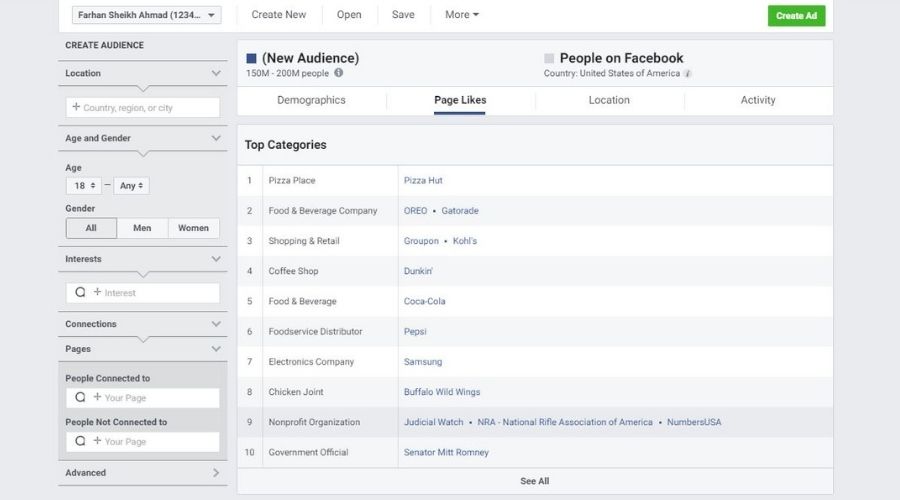
Just fill up something your audience is interested in.
Let’s say I want to create a channel on skateboarding techniques. I’ll start with people interested in “skateboarding”.
Now you can see some cool insights like the majority of the people being between the age of 25-34.
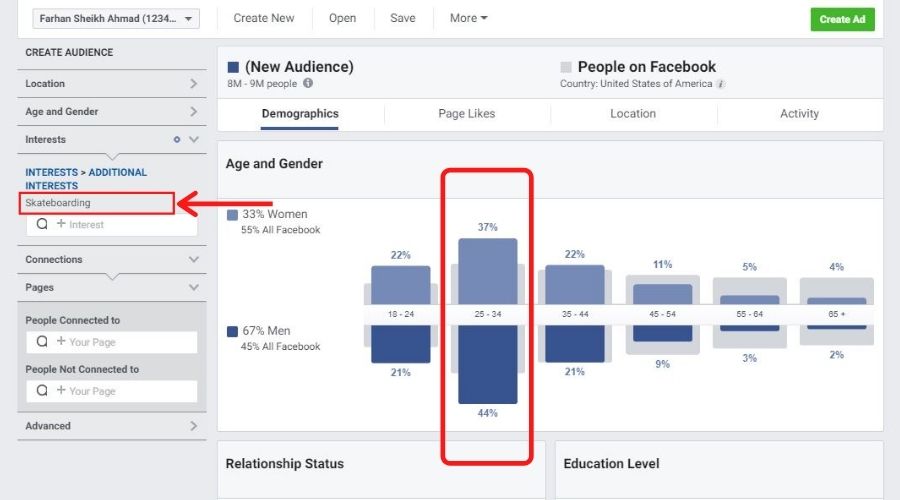
And if you click on the Page Likes tab, you can see what other things they’re interested in.
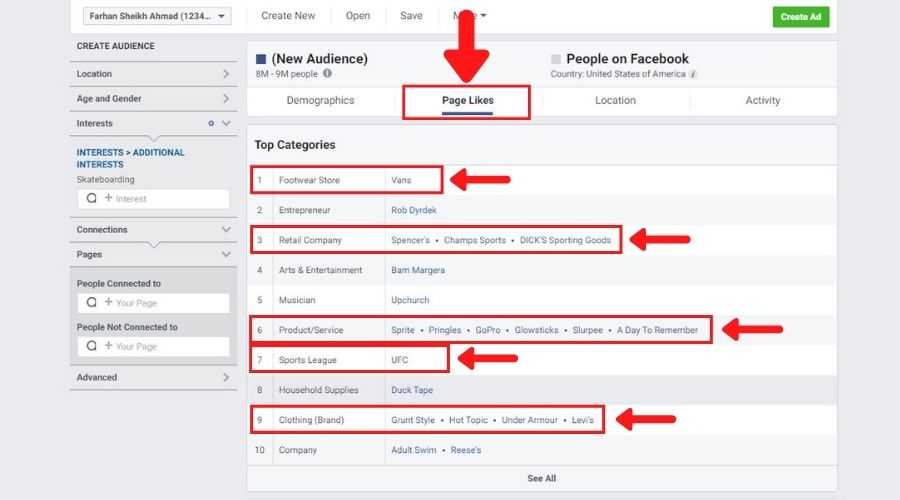
And if you scroll down further, you can see the Facebook pages they like.
Types of video objectives?
Once you know who you’re creating videos for, It’s time to define a prime objective.
There are 3 main categories for objectives:
- Brand awareness
- Education
- Entertainment
Now it doesn’t mean that you can’t educate when you’re entertaining or the other way around. You just have to choose the primary objective based on what you want to achieve.
#1: Brand Awareness
Brand awareness videos are usually short. It’s telling the users that you exist.
The commercials you see on TV are a good example of this. Take this ad on John West Salmon for an example.
The main idea here is that viewers should know the brand name and what they provide.
#2: Education
Educational content could be tutorials, guides, or explainer videos.
How about an example?
Loi Liang Yang teaches a lot of ethical hacking techniques. You can also find plenty of guides to protect yourself from cyber-attacks.

Ahrefs is another good example.
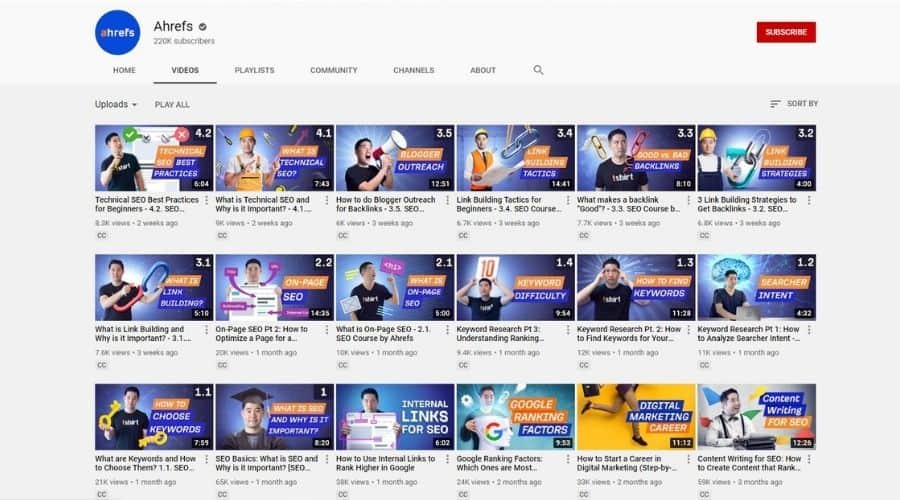
Most of their videos are tutorials on marketing and SEO strategies. They also create videos on how you can use their software to make it easier.
#3: Entertainment
Entertainment is pretty self-explanatory. All tv shows, web series even what Mr. Beast does fall under this category.
Entertainment videos are often created as stories.
Redbull does a great job at this. They create videos and series around extreme sports. That draws their target customer’s attention.
Video Creation
After you’ve defined the objective, it’s time to create the video content.
Now I can not tell you what and how to create, you can read my guide on video production here.
With that in mind, We’ll see important aspects of creating video content:
- Optimal Length
- Video Type
- Breaking through the common struggles
What is the best length for the video content?
The length of your video is usually determined by your primary objective.
#1: Length of Brand Awareness Videos
A brand awareness video could be around 15 seconds to 2 min.
Now, think of those ads that you see before you watch some YouTube videos.

There is the best example of a brand awareness video.
#2: Length of Educational Videos
Education videos can go from 5 minutes to a couple of hours.
Most of the video tutorials are around 5 – 20 minutes. It can go even beyond based on what you’re teaching and how the user is engaging.
Now bear this in mind,
“Most of the viewers want informational and instructional videos to be less than 20 minutes.”
#3: Length of Entertainment Videos
Entertainment videos can go from 10 minutes to a couple of hours. The Entertainment genre is quite huge and it’s hard to define the best video length for you.
Take it this way,
Top YouTubers like Mr. Beast have their video length around 15-20 minutes.
Whereas, all the web series episodes you watch should be at least 40 minutes.
Types of video format?
Speaking of the format, this is where you’ll see a lot of variants.
It just depends on your audience, objective, industry, and the message you want to get across.
In short, there is no set of rules for this. You just have to develop your instinct on this.
Just to make it easier for you. There is one format that I see working for all audiences, objectives, and industries.
It looks something like this:
- Problem
- Teaser
- Solution / Story
Take it this way,
Whether it’s a commercial, tutorial, or movie, there is always a problem.
Problem is something that makes the content interesting. That’s why I strongly recommend you lead the video with it.
Next is the teaser. The point here is to show that there is a solution to this problem without giving it away.
Finally, it’s the story of the solution. This again depends on your objective.
For example,
Education videos would usually have a clear-cut solution. Whereas a movie would lead to a story that leads to the solution or its conclusion.
How about an example?
Brave came up with this commercial.
They started right with how the sites track our activities, cookies that build a profile on our behavior, and more.
Then they propose a new browser called Brave. That leads us to their solution on how it can make our internet browsing faster, and safer, and how we can browse the internet with a good user experience.
Overcome your ‘struggles’
Now if you’re new to video marketing, you’re most likely to face some problems.
And they might seem like a huge roadblock. Believe me, you can easily overcome them.
Let’s break down these problems and their solutions.
#1: Not Feeling Good in Front of the Camera?
This has been one of the greatest struggles for every video creator (including me).
It doesn’t feel natural standing in front of a camera and speaking to a lens. Plus it feels awkward knowing that thousands of people are going to watch you like that.
But there comes the beauty of video editing tools.
Here is the list of free video editing software for you to get along with this.
The main idea here is to take the viewer’s attention away from you by creating better content. You can use graphic effects, screenshots, and more to achieve this.
For example, Adam Lodolce uses a lot of graphics and a B-roll to make the video look interesting.
Ryan Higa uses plenty of graphics effects to make his video dynamic and entertaining.
So what’s common between these two?
They made you focus on what they have to say or show rather than their appearance.
#2: Don’t have equipment?
Here’s the deal,
Video production quality is overrated.
Most of your favorite video creators spend good equipment to create quality videos.
But it isn’t necessary to create impactful videos.
You’ve always got a camera in your pocket, that’s your smartphone.
Now, if you use it correctly, you can create a pretty good quality video just by your smartphone.
#3: Not a native English speaker?
Now let’s face it,
Some people would indeed hate the accent and choose not to watch your video because of it.
On the flip side,
There are millions of people around the world for whom your accent won’t be a problem as long as the content is good.
Here’s the deal,
If you want to start creating videos but have an accent. Just don’t bother about it! You’ll eventually find viewers who’d appreciate it if your content is good.
How do get videos in front of the right people?
This is the final and most important part of your video marketing strategy. This is how you’re going to get views and reach your video objectives.
#1: Through Organic Reach
This is where your video gets views from features like suggested views, browse features, youtube search, and other search engine rankings.
I’ll be posting a detailed guide on video SEO soon, so stay tuned for that.
Because that’s how you’re going to get views from the searches. Especially when your main objective is education.
People would always be searching for helpful guides on some topics. So it’s never too late.
#2: Embedding Videos on your blog post and landing pages
If you’ve got a website where you’re getting traffic. It’s always worth embedding your videos in relevant places.
It’s probably the easiest way to get your video views.
As per what I’ve seen,
Embedding your videos on relevant posts helped it to rank on Suggested clips, Google’s video carousels, and the video search tab.


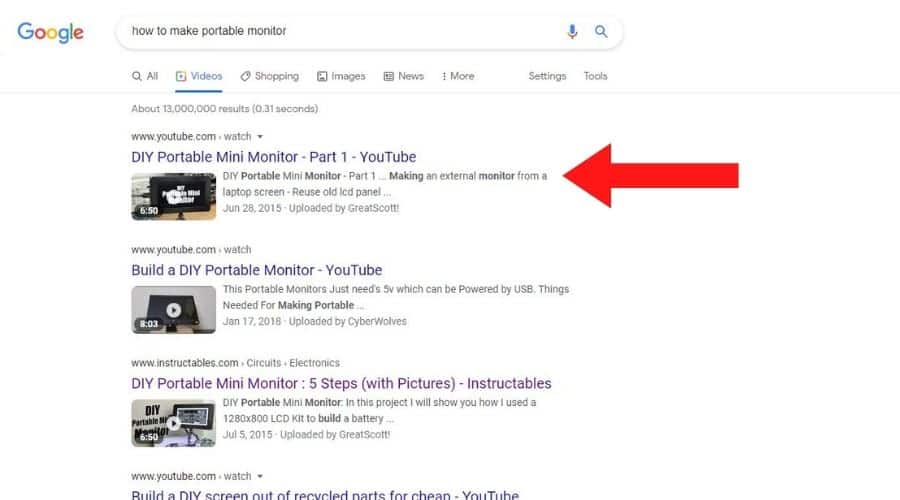
Just to let you know, the website must have consistent traffic to pump in some highly engaging viewers. That gives youtube a signal that your video is helping the viewers or that they enjoy watching it.
#3: Through other social media platforms and Email List
Now, If you’ve got an existing email list or followers on Facebook, Twitter, and more, you’re already in luck.
For the email list,
You can just blast off the newsletter promoting your latest videos using any email marketing tool you use.
For Social media,
If you want most of them to watch your videos, you can just upload them as a whole. Video content tends to perform more as compared to other content types on social media.
If your goal is to get the users on your youtube channel. I’d recommend you upload a short clip on the social platform, then lead them to the full video on youtube.
Here’s the deal,
You can put a link in your description leading the people to the full version of the video.
But some social media channels like Facebook tend to reduce the organic reach when you’re driving the users away from their platform.
Here is a quick tip that has been working for quite a while.
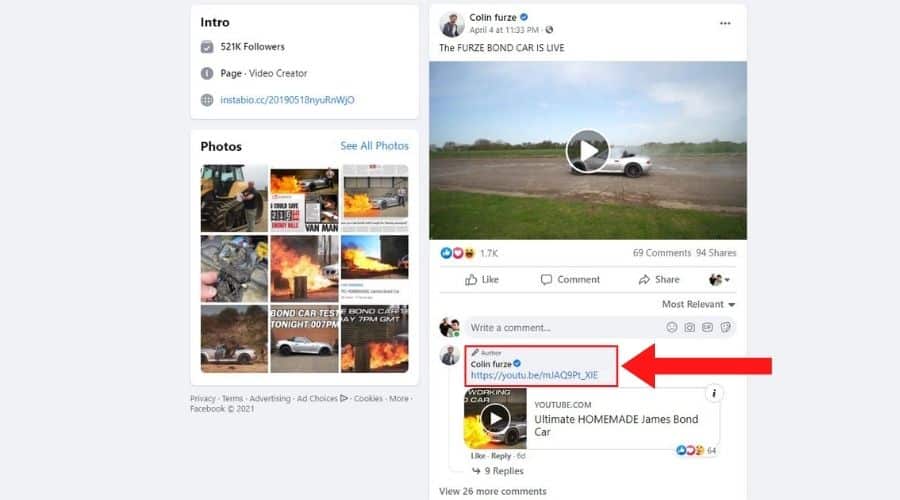
You can leave the link within the comment section and pin it at the top of your comment section.
#4: Using paid ads to promote your videos
This is the final strategy I recommend. Don’t be afraid of throwing money into video ads.
Why it rocks:
A little of it can go a long way.
Facebook Ads
Facebook video ads tend to work great for brand awareness and lead generation.
Lead generation videos are the ones that lead the viewers to signup for a webinar. It also could be free after they signup for your email list.
You can then nurture those leads and try selling your product or service.
Facebook has the best audience targeting features if you know your audience too well.
You can create videos that get on their nerves. Then use Facebook to get highly engaging viewers quickly.
Youtube ads
You can promote your youtube videos across their platform using their paid campaigns.
Discovery ads
You’d be familiar with the ads that appear right on the top of youtube’s search.
You can choose to show ads when the user searches for some specific word or phrase. These search ads work great when your videos are educational.
You have to identify those queries the users are looking for where your video would be helpful.
In-stream ads
These are the video ads that you see before a youtube video.
You can use these ads if brand awareness is your main objective.
If you’re to use them, it’s important to know about the format of these ads.
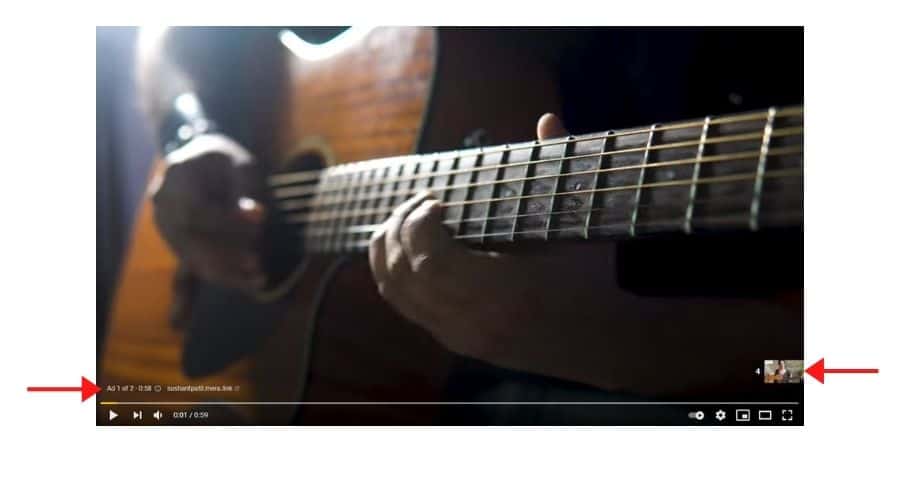
There is a format in which people are not able to skip the first 5 seconds of the video. You have to focus on:
- Grab their attention within the first 5 seconds so they continue to watch.
- Focus on your brand.
Note: Youtube considers it as a view when the viewer watches it for at least 30 seconds. It’s the full video duration if it’s shorter than 30 seconds.
Consider that youtube won’t charge you if the video didn’t get a view.
There is also a format where the user has to watch the whole video before they can watch what they clocked on.
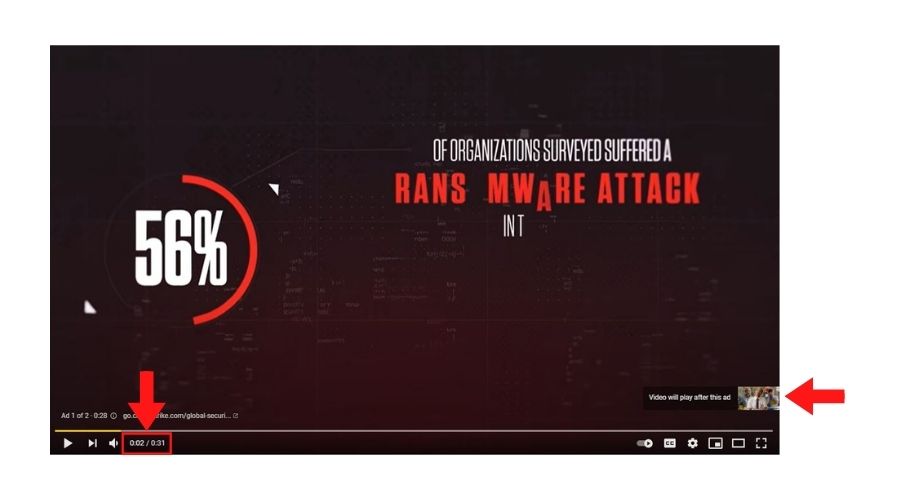
I’d recommend using this only when brand awareness is a very high priority for you.
Conclusion
Hopefully, you’d have started feeling the importance of a video marketing campaign.
I can not give enough weight to how powerful it is. And while you do so, you must do it right.
Successful video marketing comes down to the following:
- How you’re targeting your audience.
- The quality of your videos.
- How relevant your content is to your business as well as the audience.
Once you’ve reached the step of promoting the videos. I highly recommend you try video ads. You can get hundreds of views by spending as little as $10 per day.
I’ll be publishing more guides on video production as well as promoting them. So stay tuned for more.


